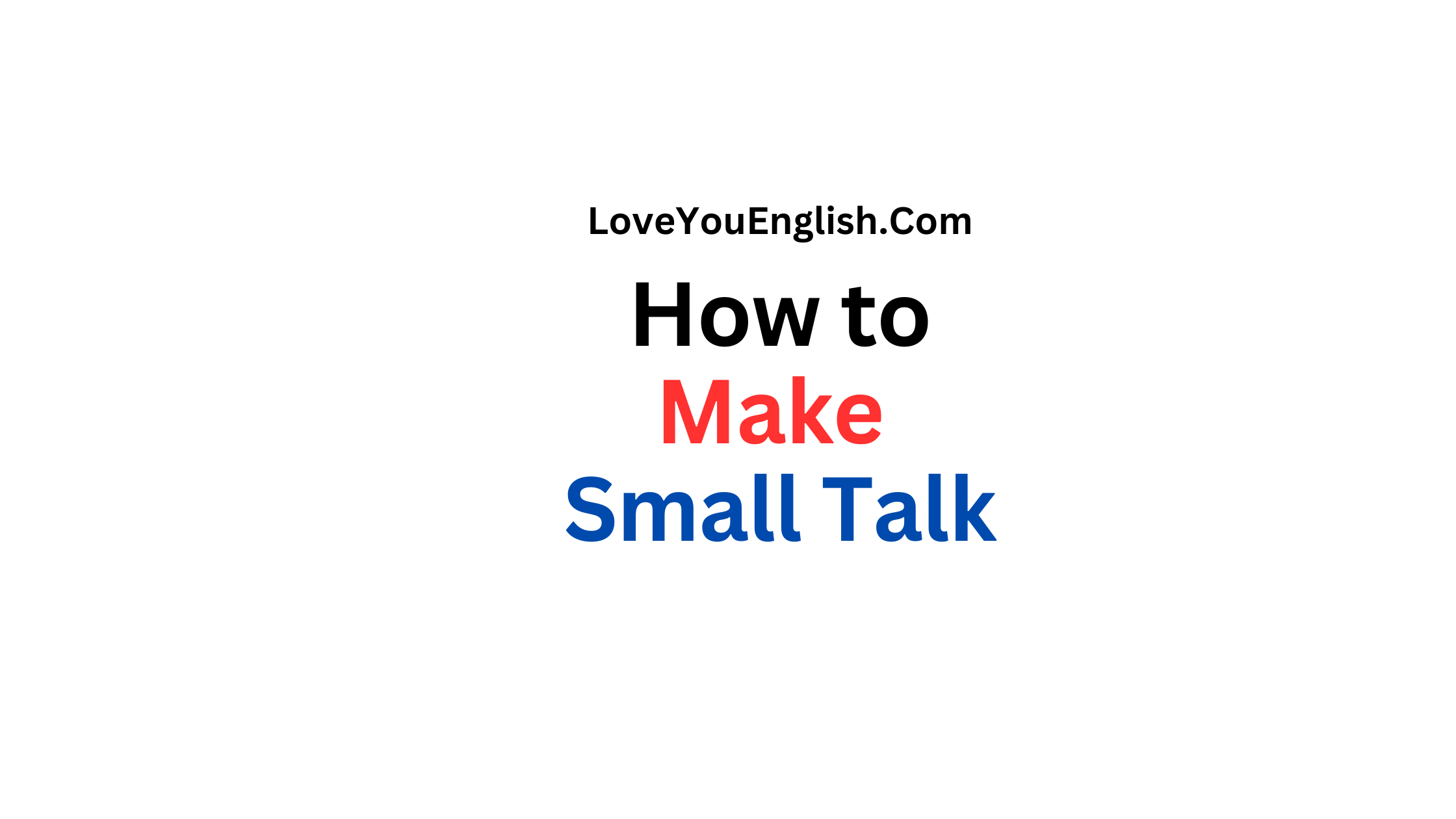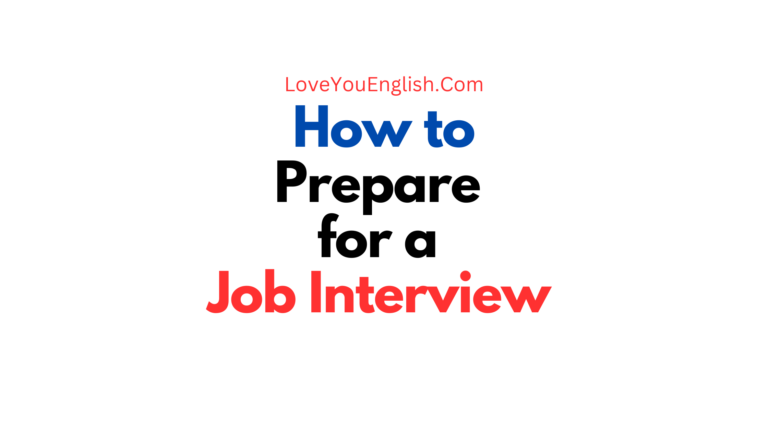How to Make Small Talk That Doesn’t Feel Like Small Talk
How to Make Small Talk That Doesn’t Feel Like Small Talk
Small talk sometimes has a bad reputation.
Some think it’s shallow, uncomfortable, or pointless.
However, small talk actually plays a crucial role in social interactions and can lead to deeper connections.
The trick is to improve your small talk to make it more genuine, interesting, and meaningful.
Here, I’ll discuss ways to have small talk that doesn’t seem like small talk, helping you create relationships and establish real connections in various situations.
Understanding the Purpose of Small Talk
Before we dive into techniques, it’s important to understand why small talk matters:
Breaking the ice: Small talk helps ease tension and create a comfortable atmosphere for further interaction.
Building rapport: It allows people to find common ground and establish a basic connection.
Assessing social compatibility: Through small talk, we gather information about others to determine if we want to pursue further interaction.
Practicing social skills: Regular small talk helps us improve our communication and interpersonal abilities.
Creating a sense of community: Casual conversations with neighbors, colleagues, or strangers can foster a sense of belonging and social cohesion.
Reframing Your Mindset
The first step in improving your small talk is to shift your perspective:
View it as an opportunity: Instead of seeing small talk as a chore, consider it a chance to learn something new, make a connection, or brighten someone’s day.
Focus on curiosity: Approach conversations with genuine interest in learning about the other person.
Practice mindfulness: Be present in the moment and fully engaged in the interaction.
Embrace authenticity: Allow your personality to shine through, even in brief exchanges.
Let go of perfection: Not every conversation needs to be profound or memorable. Sometimes, a pleasant exchange is enough.
Strategies for Elevating Small Talk
Now, let’s explore specific techniques to make your small talk more meaningful and engaging:
Ask open-ended questions
Instead of asking questions that can be answered with a simple “yes” or “no,” opt for open-ended queries that invite elaboration.
For example:
- Instead of: “Did you have a good weekend?”
- Try: “What was the highlight of your weekend?”
- Instead of: “Do you like your job?”
- Try: “What aspects of your work do you find most fulfilling?”
Open-ended questions encourage the other person to share more information, providing fodder for a richer conversation.
More related topics:
- Understanding the Difference Between “Since” and “For”
- Degrees of Comparison of Adjectives
- Has vs. Have: What’s the Difference?
- Difference Between “Which” and “That”
- What Is a Collective Noun? Examples & Definition
Practice active listening
Truly listening to the other person is key to meaningful conversation.
To practice active listening:
- Give your full attention to the speaker
- Maintain appropriate eye contact
- Use nonverbal cues (nodding, facial expressions) to show engagement
- Avoid interrupting or planning your response while they’re speaking
- Ask follow-up questions based on what they’ve said
By demonstrating that you’re genuinely interested in what they’re saying, you create a more positive and engaging interaction.
Share personal anecdotes
While you don’t want to dominate the conversation, sharing relevant personal stories can help deepen the connection and make the exchange feel more authentic.
For example:
- If discussing weekend plans, briefly mention a similar experience you’ve had
- When talking about work challenges, share a relatable anecdote from your own career
Keep these stories concise and relevant to the topic at hand.
Find common ground
Look for shared interests, experiences, or perspectives to build rapport.
This could be:
- Shared hobbies or passions
- Similar professional backgrounds
- Common life experiences (e.g., parenting, travel, education)
Once you identify common ground, you can explore these topics more deeply.
Use the FORD technique
FORD stands for Family, Occupation, Recreation, and Dreams.
These topics provide a framework for generating meaningful conversation starters:
- Family: “Do you have any family traditions you’re particularly fond of?”
- Occupation: “What inspired you to pursue your current career path?”
- Recreation: “What do you enjoy doing to unwind after a busy week?”
- Dreams: “If you could master any skill instantly, what would it be and why?”
Practice empathetic responses
When someone shares something with you, respond in a way that acknowledges their feelings and experiences.
This could involve:
- Reflecting their emotions: “That must have been really exciting for you!”
- Validating their experience: “I can understand why you’d feel that way.”
- Offering support: “That sounds challenging. How are you coping with it?”
Empathetic responses show that you’re truly listening and care about what they’re saying.
Embrace silence
Not every moment needs to be filled with talk.
Comfortable silences can be a sign of a good connection.
Don’t feel pressured to immediately fill every lull in the conversation.
Sometimes, a brief pause allows both parties to reflect and can lead to more thoughtful exchanges.
Use humor judiciously
Appropriate humor can lighten the mood and make conversations more enjoyable.
However, be mindful of your audience and the setting.
Avoid controversial or potentially offensive jokes, especially when you don’t know the other person well.
Dive deeper with follow-up questions
When someone shares something interesting, don’t be afraid to explore it further.
Follow-up questions show that you’re engaged and interested in learning more.
For example:
- “That’s fascinating. What led you to pursue that?”
- “How did that experience change your perspective?”
- “What was the most challenging part of that process for you?”
Share recommendations
Exchanging recommendations for books, movies, podcasts, restaurants, or travel destinations can lead to engaging conversations and provide value to the other person.
It also opens the door for future discussions about shared experiences.
Practice storytelling skills
Develop your ability to tell concise, engaging stories.
A well-told anecdote can capture attention and make conversations more memorable.
Focus on:
- Having a clear beginning, middle, and end
- Including relevant details while avoiding unnecessary information
- Using expressive language and appropriate gestures
- Tailoring the story to your audience
Discuss current events (cautiously)
Talking about recent news or cultural events can lead to stimulating conversations.
However, be mindful of potentially controversial topics, especially in professional settings or with people you don’t know well.
Stick to neutral subjects and be respectful of differing opinions.
Use the “yes, and” technique
Borrowed from improv comedy, the “yes, and” technique involves acknowledging what the other person has said and building upon it.
This approach keeps the conversation flowing and shows that you’re actively engaged.
For example:
Person A: “I’m really looking forward to the weekend. I’m planning to try out a new hiking trail.”
Person B: “Yes, that sounds exciting! And have you considered packing a picnic to enjoy at the summit?”
Practice nonverbal communication
Your body language and facial expressions play a crucial role in how your small talk is perceived.
To make your conversations feel more genuine:
- Maintain an open posture (avoid crossing your arms)
- Lean in slightly to show interest
- Smile naturally
- Mirror the other person’s energy level
- Use appropriate touch (e.g., a handshake) when culturally acceptable
Be willing to be vulnerable
Sharing something slightly personal (within appropriate boundaries) can help create a sense of trust and encourage the other person to open up as well.
This could be:
- A minor challenge you’re facing
- A goal you’re working towards
- A recent learning experience
Use the environment
Look for conversation starters in your immediate surroundings.
This could be:
- Commenting on the venue if you’re at an event
- Discussing a piece of artwork in the room
- Remarking on the weather (but try to make it more interesting than just “Nice day, isn’t it?”)
Practice the art of the compliment
Genuine, specific compliments can brighten someone’s day and lead to further conversation.
Instead of generic praise, try to be more precise:
- Instead of: “I like your shirt.”
- Try: “That color really brings out your eyes. Where did you find such a unique piece?”
Develop your cultural intelligence
Having knowledge of different cultures, customs, and current global affairs can greatly enhance your ability to engage in meaningful small talk, especially in diverse settings.
Stay informed about world events, learn about different cultural practices, and be open to discussing cultural differences respectfully.
Use the “What if” game
Posing hypothetical questions can lead to imaginative and engaging conversations.
For example:
- “If you could have dinner with any historical figure, who would it be and why?”
- “If you could instantly become an expert in one subject, what would you choose?”
Practice active empathy
Try to put yourself in the other person’s shoes and imagine what they might be thinking or feeling.
This can help you ask more relevant questions and respond more appropriately.
Be willing to respectfully disagree
While it’s generally best to avoid controversial topics in small talk, if differences of opinion do arise, handle them gracefully.
Acknowledge the other person’s perspective, share your own views respectfully, and look for common ground.
Use the “teach me something” approach
Express interest in learning something new from the other person.
This could be related to their profession, hobby, or any area of expertise.
People generally enjoy sharing their knowledge, and this approach can lead to engaging, informative conversations.
Practice transitions
Learn to smoothly transition between topics to keep the conversation flowing.
Listen for hooks in what the other person is saying that could lead to new subjects.
End conversations positively
When it’s time to wrap up the conversation, do so on a positive note.
Express gratitude for the interaction, summarize a key point of connection, or mention the possibility of future communication if appropriate.
Overcoming Common Small Talk Challenges
Even with these strategies, you may encounter some common small talk hurdles:
Dealing with one-word answers: If someone responds with brief answers, try asking more specific or open-ended questions.
If they continue to be unresponsive, it may be best to politely end the conversation.
Handling awkward silences: Remember that brief pauses are natural.
Use this time to think of a new question or to comment on something in your environment.
Managing anxiety: If small talk makes you nervous, practice deep breathing, remind yourself that the other person is likely feeling similar pressure, and focus on being curious about them rather than worrying about your own performance.
Exiting conversations gracefully: When it’s time to move on, be honest and polite.
You might say, “It’s been great chatting with you. I need to [reason for leaving], but I hope you enjoy the rest of your day!”
Balancing between personal and professional: In work settings, maintain a balance between friendliness and professionalism.
Be cautious about sharing overly personal information or asking intrusive questions.
Practicing and Improving Your Small Talk Skills
Like any skill, making engaging small talk improves with practice:
Set small talk goals: Challenge yourself to have a brief conversation with someone new each day.
Reflect on your interactions: After each conversation, think about what went well and what you could improve.
Expand your knowledge: Stay informed about current events, read widely, and pursue diverse interests to have a broader range of conversational topics.
Observe skilled conversationalists: Pay attention to how socially adept people navigate small talk and try to incorporate their techniques.
Join social groups or clubs: This provides regular opportunities to practice small talk with like-minded individuals.
Take a public speaking or improve class: These can help you become more comfortable thinking on your feet and expressing yourself clearly.
Conclusion
Turning your casual conversations from boring to meaningful takes practice, paying attention, and a real interest in others.
By changing how you see small talk, using these tips, and always trying to get better, you can make these short chats a way to connect, learn, and grow.
Remember, the point isn’t to have super deep talks every time you chat with someone.
Instead, it’s about being real, curious, and open in these moments.
This attitude can lead to more interesting talks and might even help you build stronger relationships.
As you work on your small talk skills, you might discover that these little chats make your life more interesting, create a sense of community, and sometimes lead to unexpected opportunities or friendships.
So next time you’re in a small talk situation, see it as a chance to practice connecting with others.


![How to Write an Interview Thank You Email [Tips + Examples]](https://loveyouenglish.com/wp-content/uploads/2024/12/Copy-of-page-6-768x432.png)




